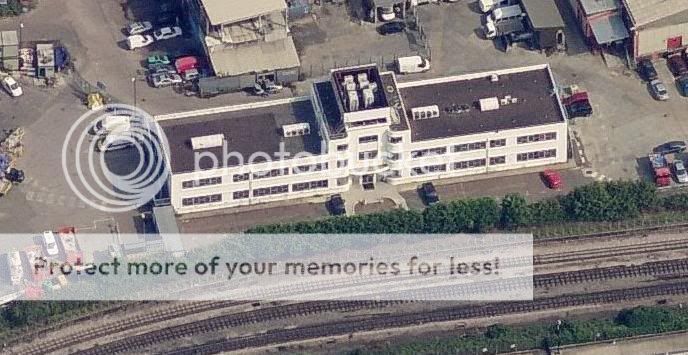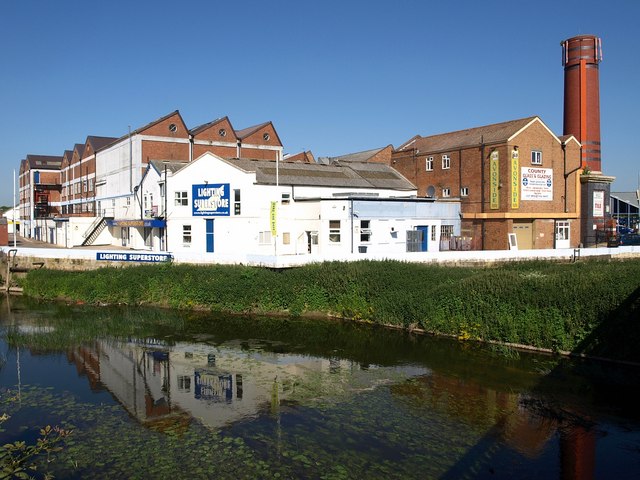SWT_USER
Member
The bay at West Ealing is still there, albeit overgrown, behind platform 3.
Hello,
I am interested in milk trains and the infrastructure that existed to handle them, both creameries at the country-end and bottling plants in the towns.
This is a general appeal for help in finding photos of the buildings that were involved in this traffic as they seem to be rather poorly photographed unless they happened to be adjacent to a station. My main area of interest in the Western region up until the end of the steam however I would welcome photos from any period and anywhere in the country.
Online pictures are great but if anyone can recommend any good books on the subject that would also be of interest.
One particular building I am interested in is the bottling plant at Wood Lane in west London. This striking art-deco building is still there today but I have been unable to find any photos of it in use for its original purpose. Here is an aerial shot of the building today courtesy of Bing.

In order to get things rolling, I have added some links to the photos I have found so far covering the subject.
Here are some shots of the creamery at Moreton-in-the-Marsh.
http://www.warwickshirerailways.com/gwr/moreton_marsh.htm
Here are a couple of shots of the bottling plant on Rossmore Road next to Marylebone station after it closed to milk traffic.
http://daverowland.fotopic.net/p48050807.html
http://daverowland.fotopic.net/p48050806.html
Some information on the milk flow from Torrington.
http://www.svsfilm.com/nineelms/torr.htm
Merton bottling plant complete with Express Dairies shunter on duty.
http://gallery62603.fotopic.net/p58745379.html
Any more additions very welcome.
I have come across a few more pictures to share. The first is milk tankers being unloaded at Vauxhall.
Next we have the milk dock at West Ealing.
And then the Express Dairies facility at Morden. This is parhaps the most interesting as it shows a great view of the covered part of the sidings.
Last of all is some vintage footage from the S&D in the 1960s. It shows milk tanks being shunted at Bailey Gate.
http://www.youtube.com/watch?v=7ch7cBCgmno&feature=related
Thanks for putting these photos up - I have seen a number of references to milk trains serving Vauxhall and could never work out where they went to (assuming they served some siding or depot). It amazing to see them pumping milk into a pipe network on the actual platform. Any idea where the pipes then went to?
I doubt if this helps much, as someone mentioned it earlier, but I've been led to believe that the Manifold Valley Line's principle source of income was from shipping milk. There were about 8 stations on the line, the majority of which had at least 1 siding, specifically for milk trucks. Check out...
http://www.youtube.com/watch?v=dWZbZGGnE6E
...which shows the line. There is clearly some milk churns on a truck visible through the loco window.
I would love to see some photos. Either links here or under a more appropriate topic.The Manifold Valley is close to my home, I know it well. If anyone wants photos, I can get some in three or four weeks, but they won't add to the story of milk by rail, there's nothing relevant to see.
That is right. The MMB retained a small fleet of tankers and gave them a fairly spiffy refurbishment. They lived on the siding at Lostwithiel for a while and can be seen nicely here.With the take over of Unigate processing by the MMB and the restructuring that followed many factories closed. Chard and Lostwithiel remain with sidings in tact and the MMB did have a small fleet of rail tanks in strategic reserve. I believe these have been since scrapped.
Very much a generic term - you wouldnt move milk from London !
If milk tankers came into London, would bottled milk ever go in the opposite direction?
There used to be demountable road-rail milk tankers, you can see one in this shot here.I've unloaded many container tanks in Cornwall several years ago now but have often wonder if they could be transhipped by rail rather than road. In effect replacing rail tankers with containers that could either be off loaded in the dairy siding or road hauled to the final destination.


How about you, Karhedron?
You could collect all the info, pictures, stories, etc.
Be sure to tie it into the railway and away you go!
